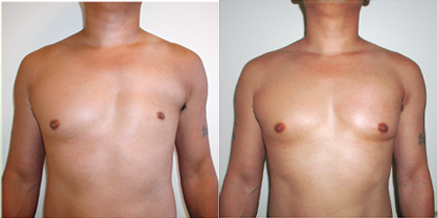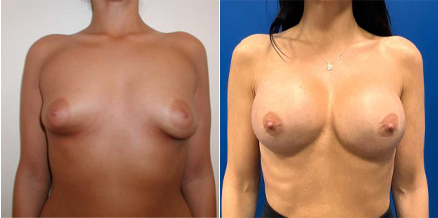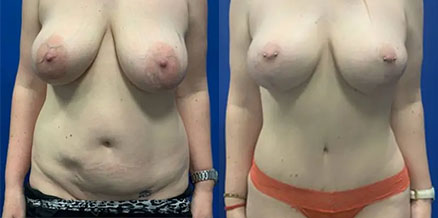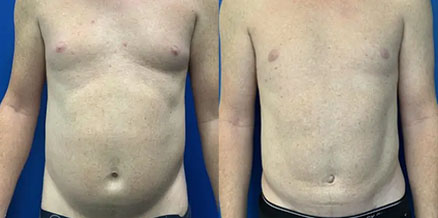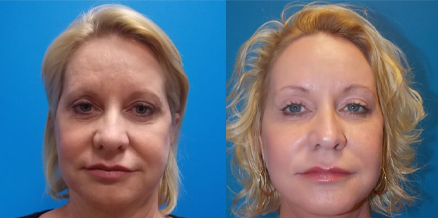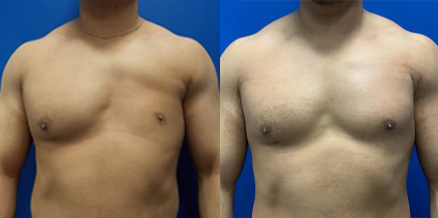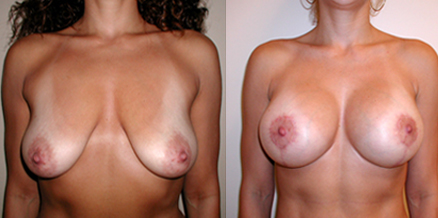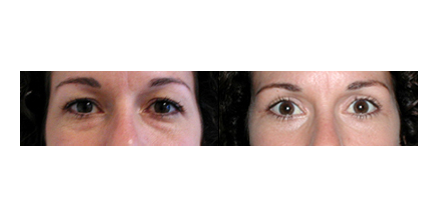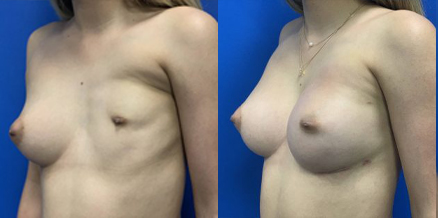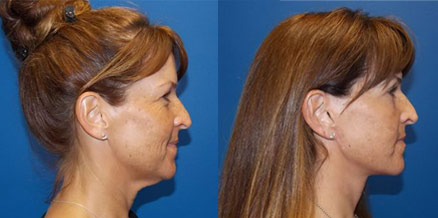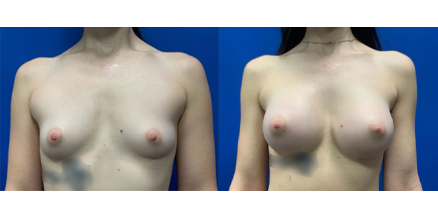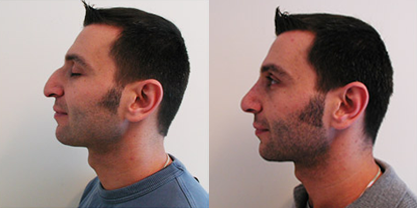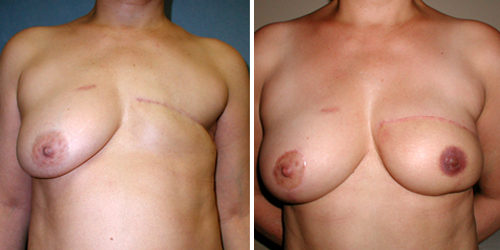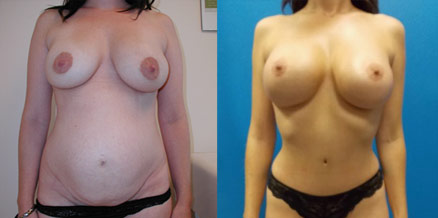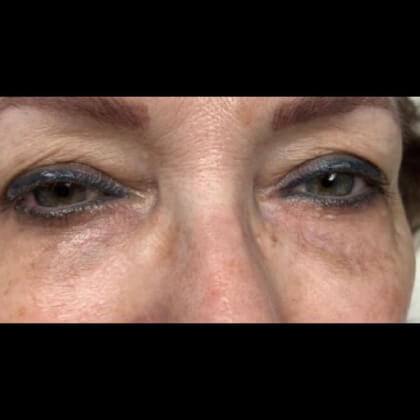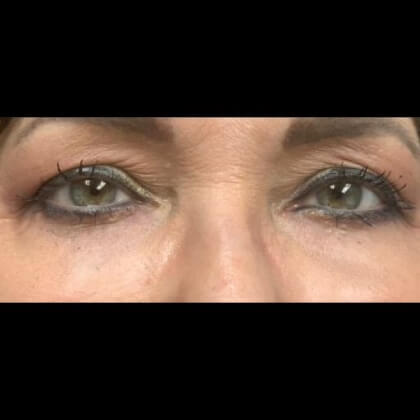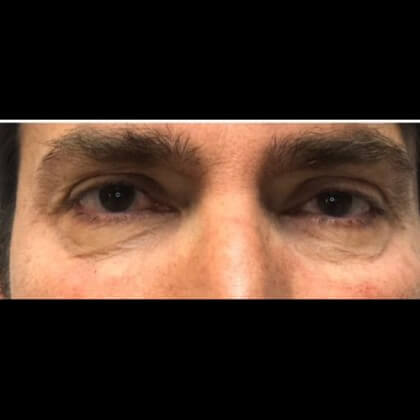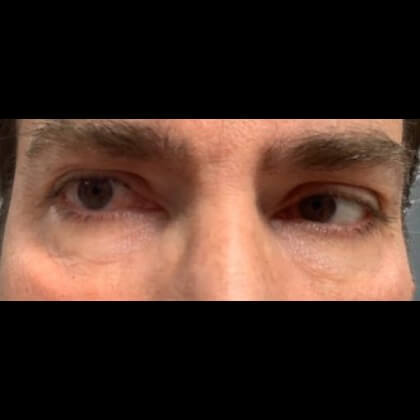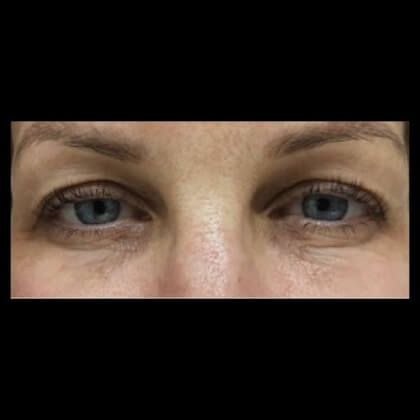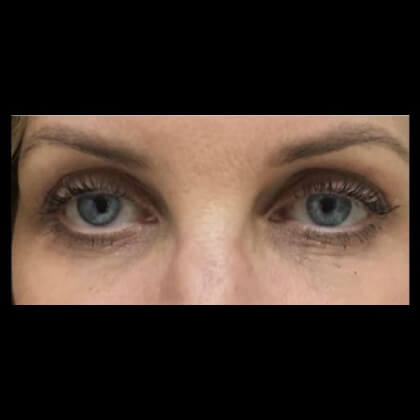CO₂ Laser Resurfacing
Conveniently located to serve the areas of Beverly Hills, West Hollywood, Los Angeles and Pasadena, CA
Laser resurfacing with a CO₂ laser is a popular cosmetic treatment used to improve skin texture, diminish fine lines and wrinkles, remove sun spots, and improve overall tone and appearance. It utilizes focused light energy to selectively target and address these concerns. (1)
Dr. Mossi Salibian is a board-certified plastic surgeon who has been practicing medicine for more than 30 years. His commitment to patient satisfaction, effective techniques, and safety has enabled thousands of patients to achieve results that enhance their body images and quality of life.

Cherie Morgan has been a California Registered Nurse since 1973, and received her Nurse Practitioner license in 1982. Cherie has been performing laser and IPL treatments since 2002 and joined Cynosure, an International Laser Company in 2004.
If you are interested in exploring your laser resurfacing options, please schedule a consultation online today or call us directly at (310) 550-0750.
Contents
- 1 About Laser Resurfacing
- 2 Before and After Photos
- 3 Benefits
- 4 Candidates
- 5 Personal Consultation
- 6 Preparation
- 7 Procedure
- 8 Recovery
- 9 Results
- 10 Corresponding Procedures
- 11 Cost of Laser Resurfacing in Los Angeles
- 12 FAQ
- 12.1 What are some of the laser resurfacing recovery symptoms?
- 12.2 How long does it take to recover from laser resurfacing?
- 12.3 Will I need multiple laser resurfacing treatments to achieve my desired results?
- 12.4 How do I maintain my laser resurfacing results?
- 12.5 Can I combine CO₂ facial laser resurfacing with other treatments?
- 13 References
About Laser Resurfacing
Laser resurfacing is a cosmetic procedure that uses focused beams of light to treat various skin concerns. (1) This advanced technique helps improve the texture, tone, and appearance of your skin by stimulating collagen production. Many people seek laser resurfacing to eliminate wrinkles, reduce acne scars, correct skin pigmentation, and enhance overall skin rejuvenation. Our practice employs either ablative lasers, which remove the outer layer of skin, or non-ablative lasers, which work beneath the surface without exfoliating the outermost skin barrier. (2,3) Both methods effectively treat imperfections such as fine lines, sunspots, and uneven texture. Ablative lasers, such as the CO₂ and Erbium, do have a longer-lasting and more effective outcome than do non-ablative lasers; however, with a longer downtime and recovery.
The history of laser technology dates back several decades, with procedures growing increasingly refined and effective over the years. Today, laser resurfacing is among the most popular treatments for skin rejuvenation due to its efficiency and wide range of options for shorter downtime with using the fractionated technology that has been incorporated into the delivery of the laser treatments as compared to traditional fully ablative options. (4) Statistics reveal that millions of patients undergo laser skin rejuvenation each year, making it an invaluable asset in aesthetic medicine.
Before and After Photos
Ablative vs Non-Ablative Lasers
Ablative lasers, such as CO₂ and Erbium lasers, remove the outer layers of skin, effectively eliminating damaged cells. (2) This method encourages rapid healing since newly generated skin replaces the treated areas. Ablative laser resurfacing is ideal for those looking for significant improvement in fine wrinkles, acne scarring, and sun-damaged skin.
Non-ablative lasers, such as the YAG and Alexandrite lasers, do not remove the outer layers of skin. Instead, they address issues by targeting deeper layers of the skin. (3) These treatments work by stimulating collagen remodeling without exfoliating the topmost skin layer. These treatments require minimal downtime and are preferred for younger patients experiencing early signs of sun damage and aging, such as fine lines and sun-related brown spots or mild skin laxity. The Alexandrite laser (755nm wavelength) is the gold standard wavelength used for hair removal, although the hair follicle needs to be pigmented and not blond. It is also the ideal laser wavelength to address sun-related hyperpigmentation or brown spots.
The YAG laser (1064nm wavelength) targets hemoglobin, which is responsible for the red color in our vessels, making it the ideal laser wavelength to get rid of spider veins, telangiectasias, and conditions with reddish skin discoloration. It is also the wavelength that is safe and effective for hair removal for Fitzpatrick skin types III-VI, or for those who have naturally pigmented skin.
Benefits
Laser resurfacing treatments are an effective way to address skin issues and signs of aging. Under the expert treatment of Dr. Salibian and his certified Laser Nurse Practitioner, Cherie Morgan, C-RNP, our patients see improvements through:
- Skin texture improvement: Laser resurfacing helps smooth rough skin by stimulating new cell growth, resulting in a supple, refined texture.
- Wrinkle reduction: It effectively minimizes the appearance of fine lines and wrinkles around the mouth, eyes, and forehead, contributing to a more youthful look.
- Acne scar treatment: For individuals struggling with acne scars, laser resurfacing can significantly diminish their visibility, leading to smoother-looking skin.
- Pigmentation correction: Uneven skin tone, age spots, and sun damage can often be improved through targeted laser treatments.
- Collagen stimulation: Laser energy stimulates collagen production, promoting better elasticity and restoring a youthful appearance with long-term, two-to-five-year sustained results.
- Photorejuvenation: This treatment enhances overall skin health by encouraging quick healing and reducing sun-related effects, rejuvenating the skin.
- Skin tightening: By stimulating collagen, laser resurfacing tightens loose skin, giving a firmer, more lifted appearance.
- Minimal downtime: Compared to other cosmetic procedures, laser resurfacing typically involves less recovery time, allowing patients to return to their regular activities more quickly.
Candidates
Ideal candidates for laser resurfacing are individuals seeking improvement in their skin’s appearance due to fine lines, wrinkles, acne scars, sunspots, uneven pigmentation, poor skin tone or texture, scars from injuries or surgeries, and mild to moderate skin laxity, among other things. Potential candidates should be in good overall health and possess realistic expectations for their results. Candidates who have received Retin A treatments, take topical steroids, or regularly use tanning beds or oils will need to delay or modify their laser treatments. Overall, a personal consultation with Dr. Salibian or Cherie Morgan, C-RNP, will help patients determine their candidacy and explore their treatment options further, as the treatments can easily be modified, and pretreatment medications may need to be used before and after a laser treatment to accomplish the best possible long-term outcome.
Personal Consultation
The first step in your laser resurfacing treatment is a consultation with either Dr. Mossi Salibian or Cherie Morgan, C-RNP. Cherie Morgan is a registered nurse practitioner and is our practice’s expert for cosmetic laser treatments. She will help you achieve the results you desire by designing an effective individualized laser treatment plan and attentive follow-up.
During this meeting, we will review your medical history, evaluate your skin’s current conditions and previous treatments and topicals used, and address the concerns you may have. Based on this evaluation, we can recommend the most appropriate type of laser resurfacing suited to your unique needs, documenting your desired results and potential risks. This step allows us to personalize your treatment plan effectively, ensuring optimal results and satisfaction.
Take a moment to schedule your consultation today by submitting our online contact form or by calling our office directly at (310) 550-0750.
Preparation
Once you schedule your laser resurfacing procedure, you will receive thorough preoperative instructions to follow closely. Adhering to these guidelines is crucial for attaining the best results. Patients may be required to adjust their medication regimen, especially if they use any form of topical steroids, Retin A products, or regularly take blood-thinning medications or supplements. Depending on the scale as well as areas for treatment (such as around the eyes), you will be advised to arrange transportation home. We recommend avoiding sun exposure and hydrating thoroughly before your treatment. Preparation steps vary between each patient, and the pre-treatment packet with guidelines, as well as the post-treatment instructions, must be followed closely to optimize results.
Procedure

At the start of your procedure, we will apply a topical local anesthetic to the treatment area to minimize your discomfort. Patients undergoing more ambitious laser treatments may be sedated, but this is not always necessary. You will also receive specialized eyewear to protect your eyes from the laser light. Although the specific laser system will vary according to your treatment plan, we will cleanse the skin thoroughly before proceeding to ensure maximum efficacy. Using the selected laser device, your specialist will carefully apply the laser to the target areas, moving consistently to cover regions evenly. Patients may feel warmth or mild discomfort as the laser penetrates the skin.
As your skin absorbs this laser light, it is converted into heat energy. This heat energy then stimulates collagen production in the skin. (5) As collagen production increases, your skin will repair itself and emerge looking healthy, even-toned and textured, and youthful.
The laser resurfacing procedure typically lasts between 30 minutes to 2 hours, depending on the extent of treatment required. Some patients may require additional follow-up treatment sessions, especially if they receive treatment from the fractional CO₂ laser system. Patients may be required to wait for at least a year to five years before receiving another treatment. Newer lasers like the Cool CO₂ and others have refined the procedure and allow for less downtime, but do require more frequent follow-up treatments.
Recovery
Following ablative laser resurfacing, patients will experience swelling, redness, and dryness for several days until peeling starts, which will continue for at least a week or longer, depending on the depth of the treatment. As your skin heals, the outermost layer will flake or peel, revealing fresher, healthier, and even-toned skin underneath. For both ablative and non-ablative lasers, recovery time varies depending on the type of laser used and the extent of the procedure. Patients can expect to encounter swelling and redness for several days after treatment. Initial healing takes around one week. Most patients see significant improvements within two weeks, while complete results may take several months as collagen continues to develop and results continue to improve for six months after a single treatment with the CO₂ laser.
Results
Most patients enjoy visible improvements in their skin shortly after the treatment, with continued enhancement as the collagen builds over time. Results can last for many years, making laser resurfacing a worthwhile investment in your appearance.
Corresponding Procedures
Lasers have become an invaluable tool in medicine and offer numerous applications for cosmetic enhancement. (6) At our practice, we can employ lasers for more than just resurfacing treatments. Some of the other laser treatments we offer include:
- Laser elimination of blood vessels and brown spots: Using injectable, FDA-approved chemicals, we can eliminate spider veins, sun spots, and similar discolorations.
- Laser hair removal: Laser hair removal is a popular method of reducing and sometimes completely eliminating hair growth where it is unwanted. In these procedures, we will often use the Alexandrite laser. For darker-skinned patients, we will use the YAG laser.
Cost of Laser Resurfacing in Los Angeles
The total cost of your laser resurfacing treatment will depend on your goals, the scale of your procedure, the type of laser used, the areas being treated, and a few other factors. Full-face treatments start at $2,500, eyelid treatments alone start at $1,000. Other areas like the neck, hands, decolletage, and others start at $500 when in addition to a full facial treatment. After meeting with Nurse Practitioner Cherie Morgan or Dr. Salibian, you will receive a price estimate. Our practice also offers financing options to help patients realize their treatment.
Take the first step toward smooth, glowing skin without the need for makeup today by scheduling a consultation. Submit our online contact form or call our Los Angeles office directly at (310) 550-0750 to get started.
FAQ
What are some of the laser resurfacing recovery symptoms?
Symptoms can include swelling, redness, puffiness, and peeling. These usually resolve within a few days (7-10 days).
How long does it take to recover from laser resurfacing?
Recovery time can vary but typically ranges between 7 to 14 days for most patients, depending on the type of laser treatment used.
Will I need multiple laser resurfacing treatments to achieve my desired results?
Usually, it is a single treatment with the CO₂ laser. Some patients, however, require multiple sessions to achieve their desired results, particularly if they have concerns with acne scarring.
How do I maintain my laser resurfacing results?
Moisturizing and following a proper skincare regimen post-treatment, as recommended by Cherie Morgan or Dr. Salibian, and the use of regular sun protection can help maintain your results long-term.
Can I combine CO₂ facial laser resurfacing with other treatments?
It is not advised to combine CO₂ facial laser resurfacing with other nonsurgical cosmetic treatments, such as Botox and hyaluronic acid-based facial fillers. However, CO₂ laser resurfacing can be combined with a facelift procedure. If a CO₂ laser is performed at the same time as a facelift, the parameters and areas of the face that are treated with the CO₂ laser are adjusted to achieve a successful outcome and prevent skin healing complications.
References
- Preissig J, Hamilton K, Markus R. Current Laser Resurfacing Technologies: A Review that Delves Beneath the Surface. Seminars in Plastic Surgery. 2012;26(03):109-116. doi:https://doi.org/10.1055/s-0032-1329413
- Verma N, Yumeen S, Raggio BS. Ablative Laser Resurfacing. PubMed. Published 2020. https://www.ncbi.nlm.nih.gov/books/NBK557474/
- Ang Barlow PRJ. Nonablative laser resurfacing: a systematic review of the literature. Clinical and Experimental Dermatology. 2002;27(8):630-635. doi:https://doi.org/10.1046/j.1365-2230.2002.01157.x
- Tull SS, Raza S. Lasers & Light Therapies for Skin Rejuvenation. Missouri Medicine. 2024;108(1):69. https://pmc.ncbi.nlm.nih.gov/articles/PMC6188454/
- Heidari Beigvand H, Razzaghi M, Rostami-Nejad M, et al. Assessment of Laser Effects on Skin Rejuvenation. Journal of Lasers in Medical Sciences. 2020;11(2):212-219. doi:https://doi.org/10.34172/jlms.2020.35
- Choy DS. History of lasers in medicine. The Thoracic and Cardiovascular Surgeon. 1988;36 Suppl 2:114-117. doi:https://doi.org/10.1055/s-2007-1022985

